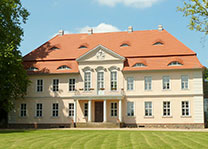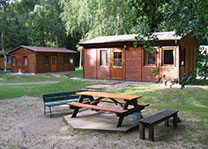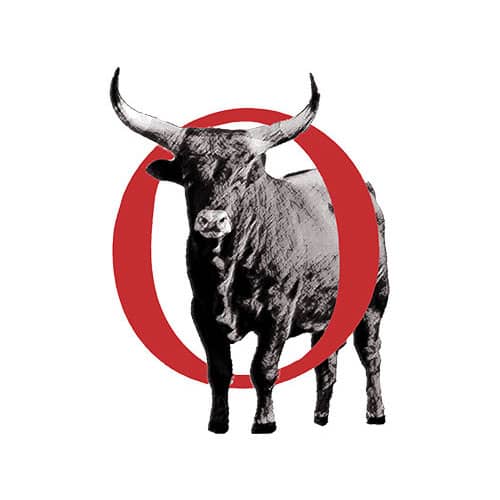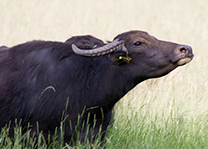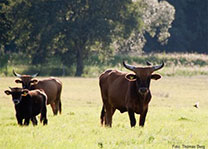The end of the nature conservation treaty
The argument has been going on for a long time, now it is decided. On the one hand there were the farmers, who wanted to be royally rewarded for all nature conservation measures on their land by the taxpayer, supported by agro-savvy conservationists who ran through the landscape with their checkbook and wanted to reward every hedge and every pond in the cleared agricultural landscape. In the good years it worked quite well, there was plenty of money – at least virtually – and the farmers should also have their share of it. But in the lean years, which according to biblical experience follow the fat years, there is simply no money left for conservation, an obvious luxury.
This is currently becoming clear from the around 1.3 million hectares of priority ecological areas in Germany that farmers have had to leave unused in order to receive EU agricultural subsidies. Russia’s brutal attack on Ukraine and the associated lack of food and feed, and potentially also fossil fuels, are now leading to the termination of these nature conservation measures. In the future, these areas may also be used for growing grain, even if only as animal feed. None of this makes sense or is necessary. These ecological priority areas make up only a tiny fraction of the agricultural area in Germany. Incidentally, a good half of German grain production is used as animal feed. The ecological focus areas are therefore of no importance for human nutrition. The Danes were smarter at the time: at the beginning of the First World War in 1914, as the largest pig farmer in Europe, they quickly slaughtered and fed their Bristle cattle. After that, they could use the pig feed to feed the people and – unlike Germany – got through the years of hunger well.
In addition, almost ten percent of the world grain harvest is not used for food and animal feed, but for the production of biofuels. In Germany alone, five percent of the arable land is used for biofuel production. Welthungerhilfe is rightly calling for a change of direction here and, for example, to give up the ten percent proportion of E10 petrol. It is not timely to grow energy crops on good agricultural sites so that rich people can supposedly drive around in heavy vehicles ecologically.
The nature conservation contract has therefore disappeared into thin air faster than expected. Going back will be long and arduous, especially since the energy transition that is being pushed ahead at the same time requires an incredible amount of space, no longer for opencast lignite mining, but now for wind turbines with their huge foundations and long access roads or the photovoltaic systems placed everywhere in the landscape. Farmers get far more money for this than contractual nature conservation can ever offer them. Farmers are economists, they will opt for more money. Species protection, or as you can put it even more beautifully in Greek-Latin, biodiversity protection only plays a secondary role.
The Bündnis 90/Die Grünen party decided in favor of wind energy in the indisputable contradiction between species protection and the promotion of wind energy. In a key issues paper presented by the two Green Federal Ministers for Economic Affairs and the Environment, Robert Habeck and Steffi Lemke in April 2022, only 16 breeding bird species are listed as species relevant for wind power planning. In Brandenburg, for example, these have also included cranes, bitterns and bitterns, curlews, ruffs, redshanks, corncrakes and black-tailed godwits, as well as whooper and miniature swans, black grouse and capercaillie, and the great bustard. These are no longer taken into account in the key issues paper by the two federal ministers. After all, the federal states can continue to create their own regulations for bats, but no longer for birds because of the “overriding public interest” of wind energy. In the future, wind turbines will continue to be installed in the forest, which is already groaning and groaning under the drought caused by climate change and is therefore threatened by pest infestation and windthrow. Now it is additionally broken up by the numerous, solidified access roads and has to accommodate the large and heavy concrete foundations in its ground. What is new, however, according to the key issues paper by the two “green” federal ministers is that in future wind turbines should also be possible across the board in landscape protection areas (LSGs). Only NATURA 2000 areas and world cultural and natural heritage sites will be excluded in the future.
However, the owner can still defend himself against wind power and photovoltaic systems on his property, private owners of forests and fields are unlikely to do so because of the enormous profits that can be expected. This is where non-profit organizations, associations and foundations come into play. The non-profit association of the Friends of the German-Polish European National Park Lower Oder Valley e.V. (National Park Association), for example, only allows the installation of wind turbines outside of protected areas of all kinds, with appropriate distances to these, outside of forests and at the necessary distance from important breeding grounds rarer birds. Photovoltaic systems may not be set up on its agricultural or forestry land. In the opinion of the National Park Association, they belong on sealed surfaces and on roofs, most of which are still unused in Germany for energy purposes.
The Greens are once again trying to kill two birds with one stone and to promote photovoltaic systems on rewetted fen sites, to allow dual-use systems, so to speak. However, a low moor does not only consist of water, but of a complex community of plants and animals, which cannot develop so splendidly under photovoltaic systems.
In short, what remains but resignation? Actually only the old recipe that the National Park Association has enforced for 30 years, even against resistance from official nature conservation in Potsdam: In future, nature conservation must become an equal player in the capitalist competition for the limited and coveted area, powerful and assertive, but non-profit, in contrast to its self-serving competitors for the area. That’s his unique selling point, he has to grow with this pound. Like every fight for limited resources, this fight is waged with hard drums, nothing is given to you. But, as former Federal Environment Minister Angela Merkel would have liked to say, if she had put it that way, there is no alternative.
Dr. rer. nat. Ansgar Vössing
Deputy Chairman of the Board




